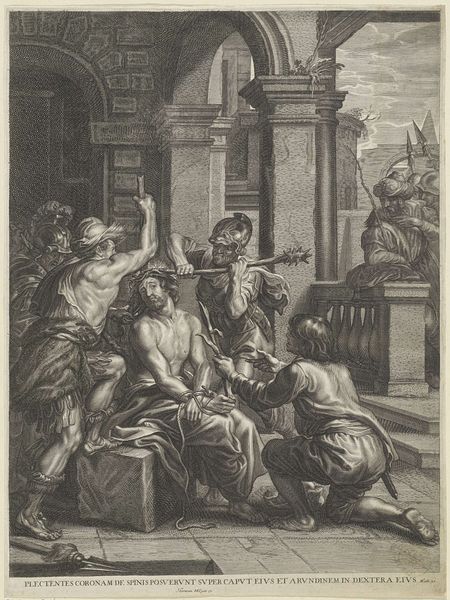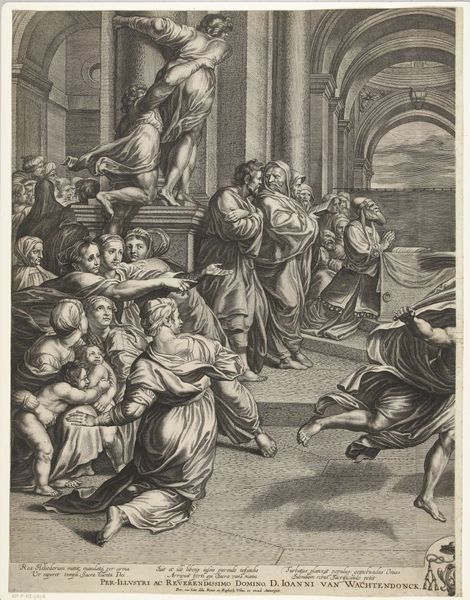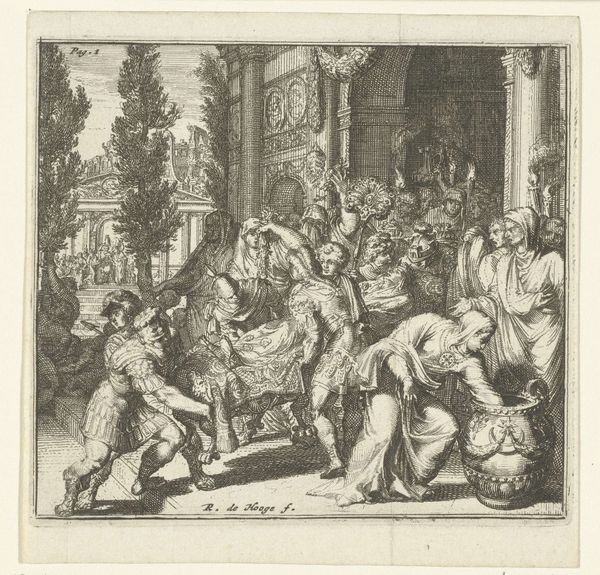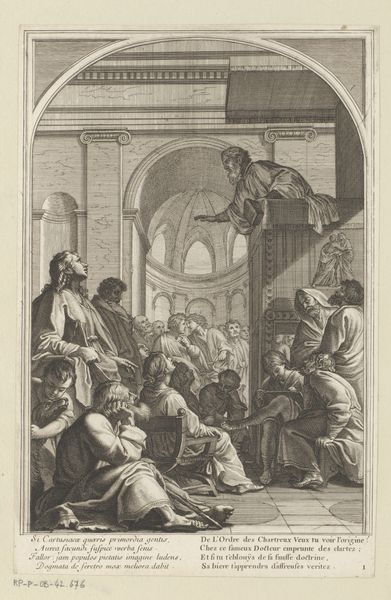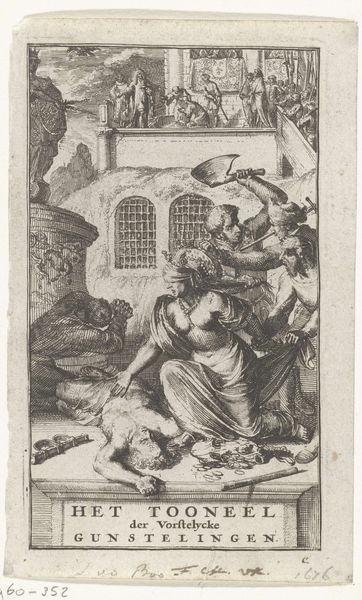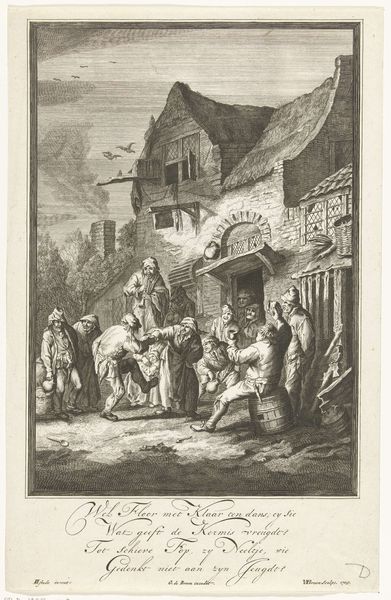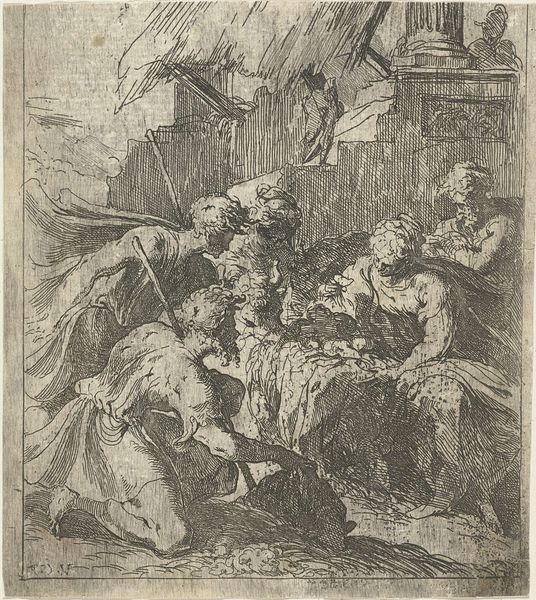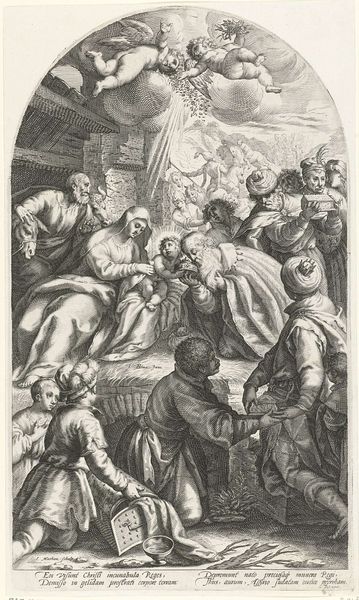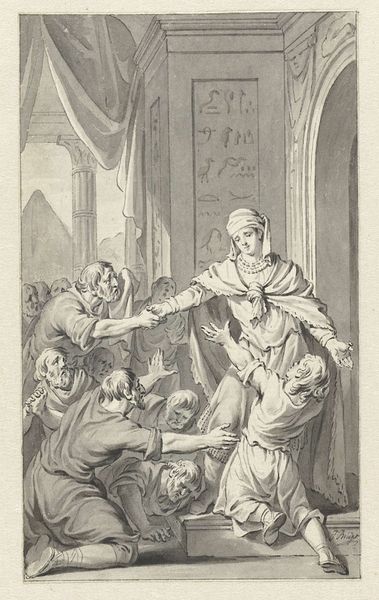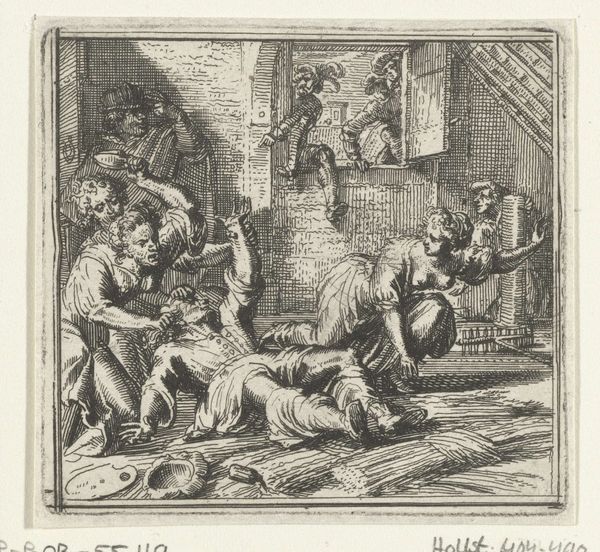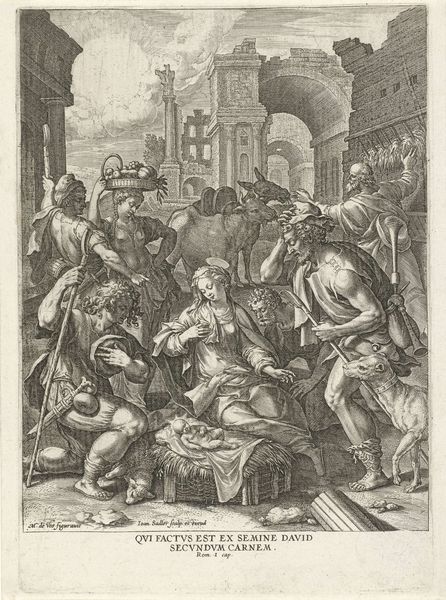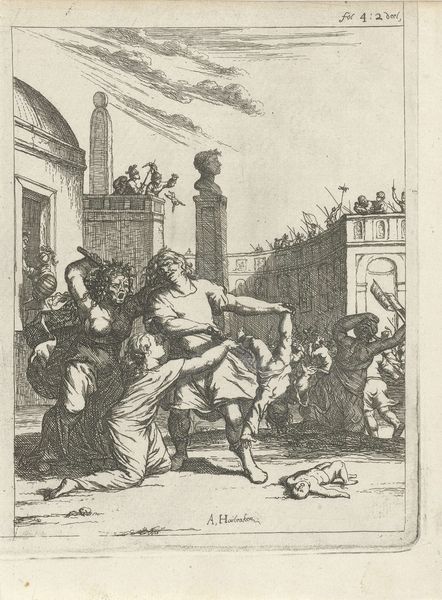
print, etching
#
ink drawing
#
narrative-art
#
baroque
# print
#
etching
#
figuration
#
line
#
history-painting
Dimensions: height 187 mm, width 156 mm
Copyright: Rijks Museum: Open Domain
Editor: This etching, "Christus verdrijft de geldwisselaars uit de tempel," depicting Christ driving the money changers from the temple, was created sometime between 1630 and 1700 by an anonymous artist. The overwhelming mood is definitely chaotic! What do you make of it? Curator: Indeed. The scene bursts with a frenetic energy characteristic of the Baroque. Considering its historical context, it challenges the perceived sanctity and institutional corruption within religious spaces. How does the artist use the composition to underscore that critique, would you say? Editor: The diagonal lines, maybe? The figure of Christ is so dynamic, whip in hand, positioned above the tumbling tables and recoiling figures. It feels like a clear condemnation. Curator: Exactly. And think about the people depicted. Who are they? What does it mean to portray these merchants this way? We see not just a religious event, but a disruption of power, a redistribution of the symbolic space of the temple. Do you think the artist felt empowered by this event to portray the realities they encountered? Editor: I guess they felt as if they had the freedom, or maybe even felt entitled to openly show these events. Was the Baroque a time for that, expressing different views? Curator: In certain respects, yes. It's also crucial to remember that prints like these facilitated wider distribution of ideas, acting almost like early forms of political cartoons, influencing public opinion and discourse. These are important voices speaking against authority and norms! Editor: So, beyond just a biblical scene, it’s a statement about social justice and challenging corruption? Curator: Precisely. It uses religious narrative as a lens to critique contemporary issues of power and exploitation. The print itself becomes a tool for propagating that message! I find the layers so engaging. Editor: It is much more layered than I had originally considered. I will look at art with an aim for different social narratives.
Comments
No comments
Be the first to comment and join the conversation on the ultimate creative platform.
